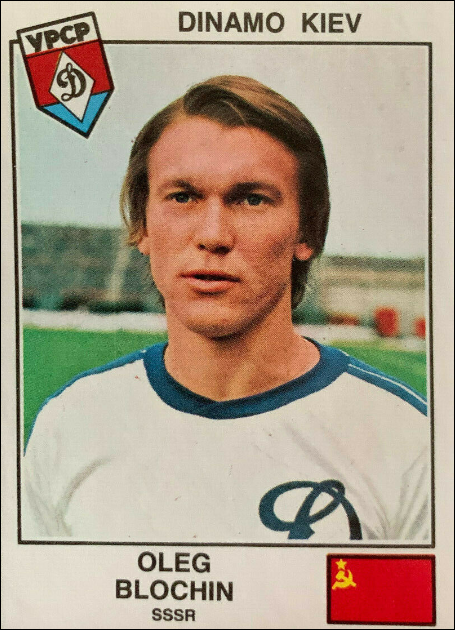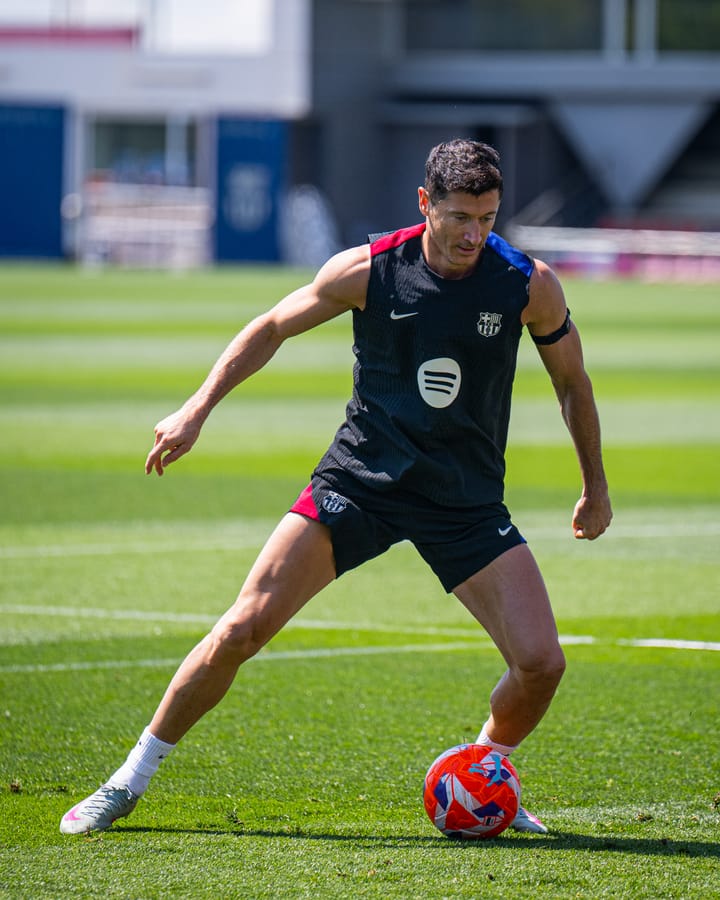Fall of the Soviet (Football) Union
The Forgotten Giants: How the USSR Built One of the World’s Strongest Soccer Leagues

We are going on the 35th anniversary of the collapse of the Soviet Union. As much as I love history and the monumental event that this was many of the shockwaves that followed are never discussed. While the USSR was a brutal dictatorship that had committed atrocities, was spying on its own people, spreading propaganda against the West, and left so many of its own people with not much hope there was always one shining light on the hill…sports.
Just a brief reminder of how dominate the Soviet Union was in athletics:
- Over 1200 Olympic Medals
- 473 Gold Medals
- 9 total Olympic appearances
- 30+ more that Great Britain who has 21 more appearances.
Between hockey, gymnastic, weightlifting, and figure skating they dominated in so many sports but the one that is often forgot about is football.
The Soviet League: A Factory of Footballing Greats
The Soviet Top League (founded in 1936) wasn’t just a collection of clubs; it was a proving ground for elite-level talent. Teams like Dynamo Kyiv, Spartak Moscow, CSKA Moscow, and Dinamo Tbilisi regularly competed at a level that could rival the best in Europe — and often beat them.
Dynamo Kyiv under the legendary Valeriy Lobanovskyi became a European powerhouse. Lobanovskyi’s high-pressing, mathematically optimized style was decades ahead of its time. In 1975, Kyiv won the UEFA Cup Winners’ Cup and UEFA Super Cup, humiliating Bayern Munich in the process — the same Bayern side that had won three consecutive European Cups.
Star players from the Soviet League who lit up the European stage:
- Oleg Blokhin (Dynamo Kyiv) – 1975 Ballon d'Or winner
- Lev Yashin (Dynamo Moscow) – The only goalkeeper to ever win the Ballon d'Or (1963)
- Igor Belanov (Dynamo Kyiv) – 1986 Ballon d'Or winner
- Andriy Zavarov, Rinat Dasayev, Aleksei Mikhailychenko – All world-class in their positions
It wasn’t just individual talent — Soviet clubs were feared across Europe. Spartak Moscow routinely upset elite Western European sides. Dinamo Tbilisi defeated Liverpool in the European Cup during the 1979-80 season. In short, this wasn’t just a “good league” — it was a sleeping giant that never got the global credit it deserved.
The National Team That Couldn’t Cross the Finish Line
The USSR national team was stacked. They had elite players, tactical innovation, and physical discipline. But in the biggest moments, they could never seem to win it all.
- 1960: USSR won the inaugural European Championship
- 1964, 1972, 1988: Runners-up
- 1986: Knocked out in the World Cup Round of 16 (controversially) by Belgium
- 1988 Olympics: Gold medal, defeating Brazil with a team full of young stars
Despite all this, the USSR never won a World Cup. There were many reasons: tactical rigidity at times, internal political tension, and simply the bad luck of facing peak versions of Brazil, West Germany, or the Netherlands in critical stages.
They were always close, but never crowned.
Soviet Soccer: World-Class Coaches Behind the Scenes
The USSR didn't just produce talented players—it was also home to visionaries who reshaped modern football:
Valeriy Lobanovskyi (Dynamo Kyiv & USSR national team)
- Pioneer of scientific football tactics, integrating data, physical modeling, and pressing systems—years ahead of Western trends beyondthelastman.com+8si.com+8al.io.vn+8engelsbergideas.com.
- Guided Dynamo Kyiv to 33 trophies, including multiple Soviet league titles, two Cup Winners’ Cups, and a UEFA Super Cup—the latter achieved by defeating Bayern Munich 3–0 on aggregate .
- A disciple of discipline, physical fitness, and collective press—he profoundly influenced players like Andriy Shevchenko, who said Lobanovskyi taught him, “there are no strikers and defenders, you attack and defend as a team” reddit.com.
Boris Arkadyev (Dynamo & CSKA Moscow)
- A pre-WWII coaching legend, he won five Soviet league titles with Army-backed clubs and led Dynamo Moscow to glory in 1940 en.wikipedia.org+5reddit.com+5reddit.com+5.
- His teams embodied early disciplined training and state-backed organization, setting the foundation for the Soviet’s dominance through sport.
Valery Gazzaev (future era, post-1991 roots in Soviet systems)
- As manager of CSKA Moscow, he clinched three domestic trebles and the 2005 UEFA Cup—showing the lasting impact of Soviet-era coaching methodologies en.wikipedia.org.
Eduard Malofeyev (Dinamo Minsk & USSR national team)
- Led underdog Dinamo Minsk to its first and only Soviet Top League title; later managed the USSR Olympic and senior national teams. A strategist trusted at national level .
Behind the Iron Curtain: How the USSR Held Back Its Footballing Legends
One of the greatest “what ifs” in football history is this:
What if Soviet players had been allowed to play abroad during their prime?
The reality is that the Soviet government tightly controlled the movement of athletes, and for decades, no player could leave to play professionally in the West—even if top clubs like Real Madrid or AC Milan came calling.
This wasn’t about contracts or transfer fees. It was about ideology and control.
In the eyes of the Soviet regime, athletes were not individuals — they were state assets. Letting a star striker or midfielder go play in Italy or England wasn’t just a business decision. It was seen as:
- A betrayal of socialist values
- A security risk (fear of defection)
- A symbolic loss in the East vs. West narrative
Government-Controlled Clubs
Most top clubs were affiliated with powerful institutions:
- Dynamo clubs were backed by the KGB (secret police)
- CSKA Moscow was run by the Soviet Army
- Lokomotiv was tied to the rail industry
- Spartak Moscow was considered the “people’s team,” but even it wasn’t free from oversight
Players weren’t just athletes — they were military officers, agents, or state employees on paper. This structure made leaving the USSR virtually impossible.
The Result? A Hidden Generation of Talent
Because of these restrictions:
- Lev Yashin, the greatest goalkeeper in history, never played outside the Soviet Union.
- Oleg Blokhin, a Ballon d'Or winner, only moved abroad at age 34, when his best years were long behind him.
- Dozens of world-class talents spent their entire careers behind the Iron Curtain, competing only in Soviet domestic leagues or limited European competitions.
The Double Standard
Meanwhile, players from Western Europe were becoming global icons — signing endorsement deals, traveling the world, and building legacies in Serie A, La Liga, and the Bundesliga.
Soviet stars, just as talented, were stuck in a closed system. No TV exposure, no lucrative contracts, and no real way for the rest of the world to see how good they truly were.
Even when some were finally allowed to leave in the late 1980s (as reforms like Perestroika took root), it was too late. Their prime had passed. The world never got to see what the USSR’s best could have done on football’s biggest club stages.
Why It Mattered So Much
In the Soviet Union, sports weren’t just entertainment — they were ideology. Athletes were symbols of state power. A victory over a Western team wasn’t just a game — it was a Cold War victory. But for many ordinary citizens, sport was something much deeper: a release.
Soccer fields across Ukraine, Georgia, Armenia, and Russia were filled with kids dreaming of escape. For millions, football was a path out. A rare way to see the world, earn money, and be recognized as something more than a cog in the system.
The great irony is that, while the state tried to use athletes, those athletes often used sport to chase freedom.
The Legacy Lives On
Today, the nations that once made up the USSR have produced legends like Andriy Shevchenko (Ukraine), Henrikh Mkhitaryan (Armenia), and Khvicha Kvaratskhelia (Georgia). But the unified powerhouse of the Soviet League is gone — fractured into pieces by history.
Still, for those who remember, that era was more than just tactics and trophies.
It was the story of how even under the darkest regimes, the human spirit found a way to compete, to hope, and to play.


Comments ()